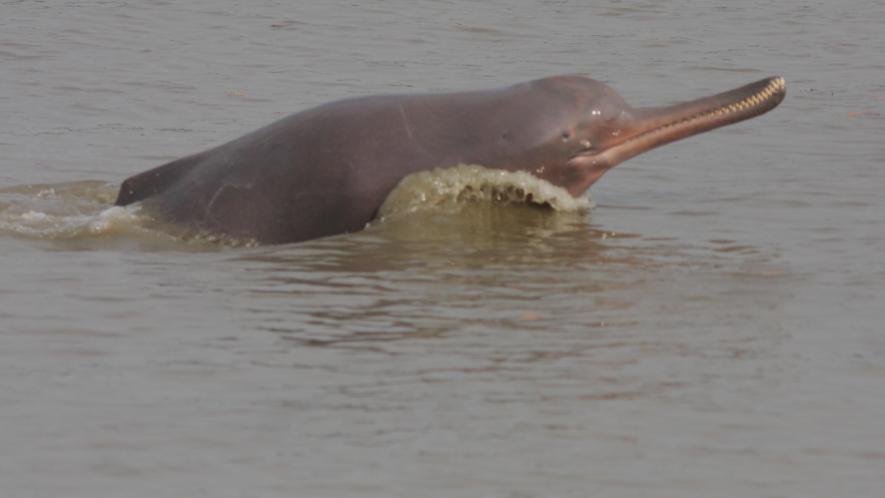Endangered Gangetic River Dolphins’ Population Increases in India’s Only Dolphin Sanctuary

Ganges river dolphin. Image Courtesy: Wikipedia
Patna: The population of the endangered Gangetic river dolphins has increased at Vikramshila Gangetic Dolphin Sanctuary in Bhagalpur district – India's only sanctuary for its national aquatic animal. This was revealed by the latest survey conducted this year by a team of Wildlife Conservation Trust (WCT) and local experts. The news comes as a glimmer of hope against the backdrop of the intensifying threat of climate change.
As per the survey by the WCT, the population of dolphins in the sanctuary has increased to 208 from 188. Besides, many baby dolphins were found during the survey.
According to a scientist associated with the survey, a team of WCT conducted surveys in the sanctuary between January and June this year. This is the first time in recent years that the population of dolphins has increased rapidly in the sanctuary. In 2018, the number of dolphins in the sanctuary was 171.
Bhagalpur Divisional Forest Officer Bharat Chintapalli told NewsClick that the number of dolphins appearing on the river’s surface had increased and it is a positive development for the ongoing conservation efforts of dolphins.

He further said that the department is fully alert for dolphin protection and its conservation.
Another official from the Forest Department, Sanjit Kumar, said that the increasing number of dolphins in the sanctuary signifies that they have been breeding safely and their habitat is safe.
The department officials have seized 30 quintal nets in the last year and deployed security staff for the protection of dolphins in the sanctuary. During monsoon this year, dolphins reportedly became more visible in the sanctuary due to the minimum human activity on the river Ganga.
Bihar is home to around half of the estimated 3,000 Gangetic dolphins in the country. The last survey of the dolphins was conducted in a limited stretch in 2012 in Bihar, and nearly 1,500 dolphins were counted then. Biologist and environmentalist R K Sinha, also known as the 'Dolphin Man', said that dolphins’ presence is a sign of a healthy river ecosystem. “Dolphins prefer water that is at least five feet to eight feet deep. They are usually found in turbulent waters, where there are enough fish for them to feed on,” he said.
Gangetic dolphins live in a zone where there is little or no current, which helps them save energy. If they sense danger, they can dive into deep waters. The dolphins swim from the no-current zone to the edges to hunt for fish and return, he said.

Demand for water from the river has been increasing with the rise in temperature. "We need more water, but the water level is declining in the river, putting more pressure on the dolphins to manage their life cycle," said Sinha.
Experts agree that Gangetic dolphins' habitat faces serious threats from climate change. They pointed out that increasing pollution due to large-scale discharge of industrial and municipal waste, siltation, and mechanised boats pose the biggest threat to these freshwater dolphins.
The Gangetic river dolphin is India's national aquatic animal, but frequently falls prey to poachers. Their carcasses are found regularly on river banks.
Gangetic river dolphins fall under Schedule I of the Indian Wildlife (Protection) Act and have been declared an endangered species by the International Union for Conservation of Nature (IUCN). They belong to one of the four freshwater dolphin species in the world. The other three are found in the Yangtze river in China, the Indus river in Pakistan and the Amazon river in South America.
The Gangetic river species – found in India, Bangladesh and Nepal – is blind and finds its way and prey in the river waters through echoes. These dolphins live by echolocation, and sound is everything to them. They navigate, feed, escape danger, find mates, breed, and nurse babies by echolocation.
Get the latest reports & analysis with people's perspective on Protests, movements & deep analytical videos, discussions of the current affairs in your Telegram app. Subscribe to NewsClick's Telegram channel & get Real-Time updates on stories, as they get published on our website.
























